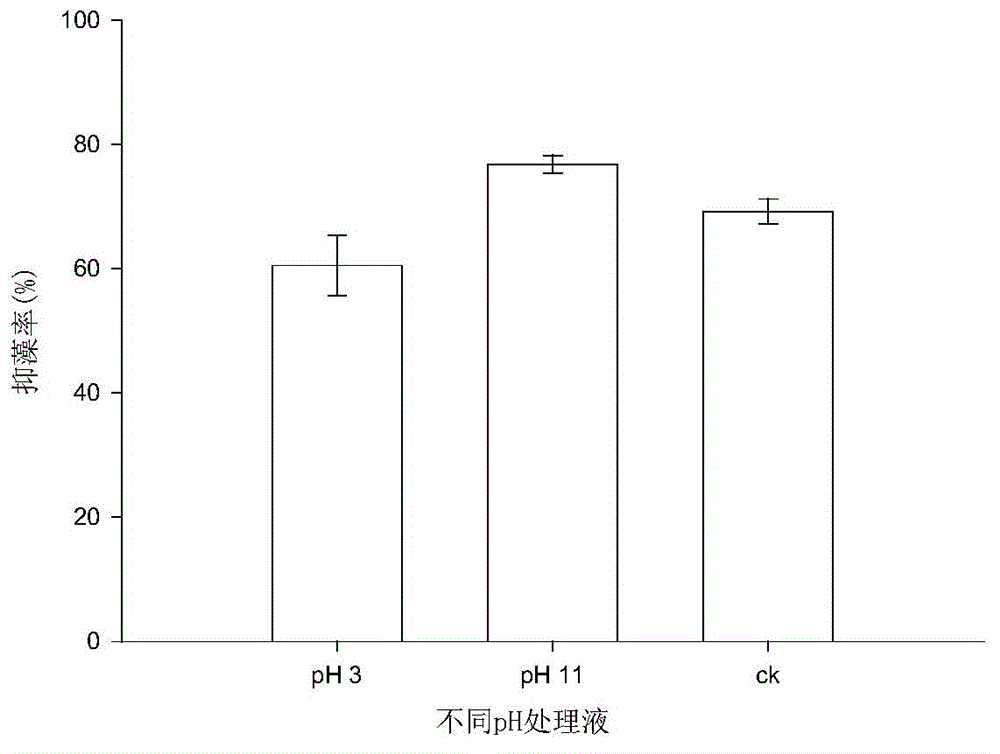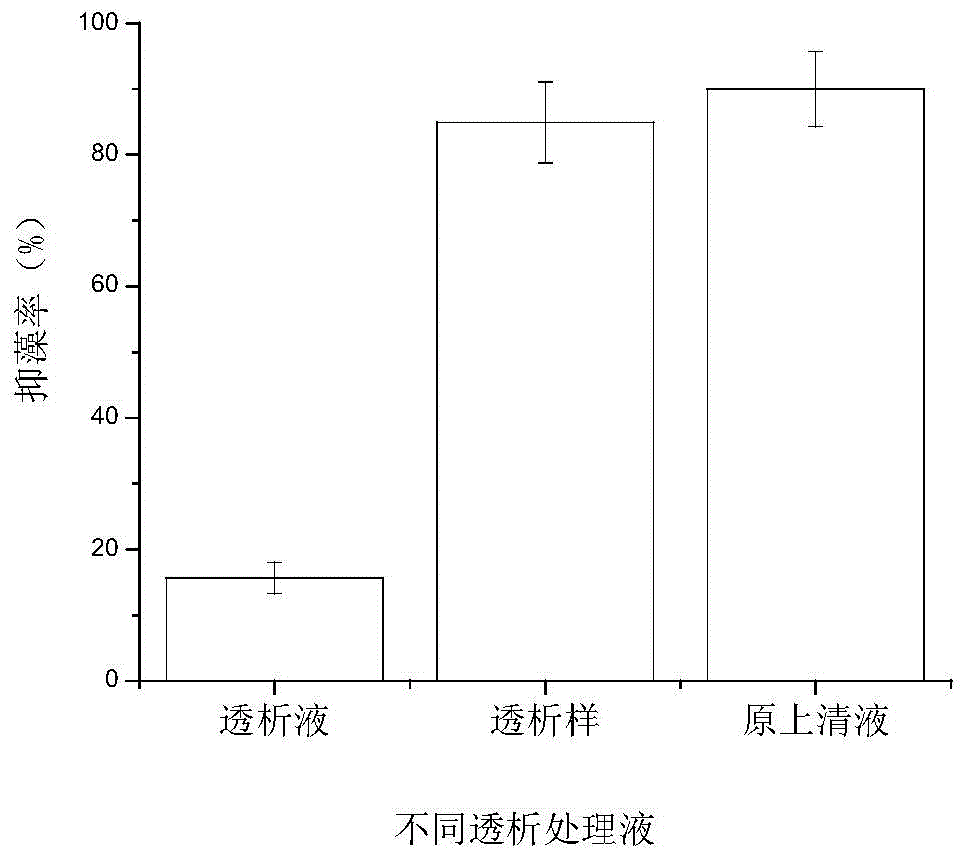Palmitoleic acid, an algae-inhibiting active substance derived from marine bacteria, and its preparation method
A technology for algal inhibitory activity, marine bacteria, applied in the directions of microorganism-based methods, biochemical equipment and methods, chemicals for biological control, etc.
- Summary
- Abstract
- Description
- Claims
- Application Information
AI Technical Summary
Problems solved by technology
Method used
Image
Examples
Embodiment 1
[0033] Example 1: Isolation and screening of Vibrio sp. BS02
[0034] 1. Take the sediments from the Zhangjiang Estuary Mangrove National Nature Reserve in Fujian, and place them at room temperature to dry for 1 month. Take 10g of dry soil samples, dissolve them in 90mL of high-pressure sterilized AC1 medium, and shake them on a shaker at 150-200rpm for 20-20~ 30min to make the soil sample evenly dispersed;
[0035] 2. 10-fold dilution method, coating uniformly dispersed samples on AC1 (20g soluble starch, 1g NaNO 3 ,0.5g K 2 HPO 4 ,0.5g MgSO 4 ·7H 2 O, 0.01g FeSO 4 ·7H 2 O, 75 μg K 2 Cr 2 o 7 , 10g agar, 1L seawater) solid plate, cultured at 28-37°C for 3-5 days;
[0036] 3. Pick different types of single colonies and streak them on the AC1 solid plate, culture them at 28-30°C for 3-5 days, verify whether they are pure cultures, and repeat this step until pure cultures are obtained;
[0037] 4. Inoculate the single colony of the isolated pure culture into 4mL AC1 l...
Embodiment 2
[0039] Embodiment 2: Calculation method of algae inhibition rate
[0040] 1. Alexandrium tamaris at 20±1℃, 12h light, 12h dark, 50μmol photons m -2 the s -1 Under the condition of light intensity, culture in the Erlenmeyer flask until the exponential phase, and then divide into 24-well cell culture plates, and fill each well with 2mL of algae cell suspension, and adapt to the growth for 1 day;
[0041] 2. Add 100 μL of the culture to be tested into a 24-well plate and incubate for 2 days;
[0042] 3. Take 100 μL sample of Alexandrium tamarensis culture solution in a 2 mL centrifuge tube, dilute it ten times with sterile sea water, fix and stain with Lugol's solution, and count under an optical microscope. Calculate the algae inhibition rate according to the following formula, and observe the changes in algae cell morphology at the same time:
[0043] Algae inhibition rate = (N C -N T ) / N C ×100%
[0044] In the formula, N C Indicates the number of viable cells in the c...
Embodiment 3
[0045] Embodiment 3: Identification of the properties of algae-inhibiting active substances
[0046] Vibrio sp. BS02 was inoculated in AC1 medium on a shaker at 28-37°C, shaken at 180-250 rpm for 3-5 days. The fermentation liquid was centrifuged under the centrifugal force of 10,000-12,000 g for 10-20 min to obtain the culture supernatant of Vibrio sp. BS02.
[0047] Experimental design of temperature treatment: heat-treat the supernatant of the culture medium containing algae-inhibiting active substances at 20°C, 40°C, 60°C, 80°C, 100°C and 120°C for 30 minutes under high pressure, and set up 3 parallel experimental groups; Clear water was added in 2mL of algae culture solution, and after cultivating for 2 days, samples were taken to calculate the algae inhibition efficiency according to Example 2. Experimental results ( figure 1 ) showed that after the temperature gradient heat treatment of the supernatant of the culture medium, the algae inhibitory efficiency against Alex...
PUM
 Login to View More
Login to View More Abstract
Description
Claims
Application Information
 Login to View More
Login to View More - R&D
- Intellectual Property
- Life Sciences
- Materials
- Tech Scout
- Unparalleled Data Quality
- Higher Quality Content
- 60% Fewer Hallucinations
Browse by: Latest US Patents, China's latest patents, Technical Efficacy Thesaurus, Application Domain, Technology Topic, Popular Technical Reports.
© 2025 PatSnap. All rights reserved.Legal|Privacy policy|Modern Slavery Act Transparency Statement|Sitemap|About US| Contact US: help@patsnap.com



